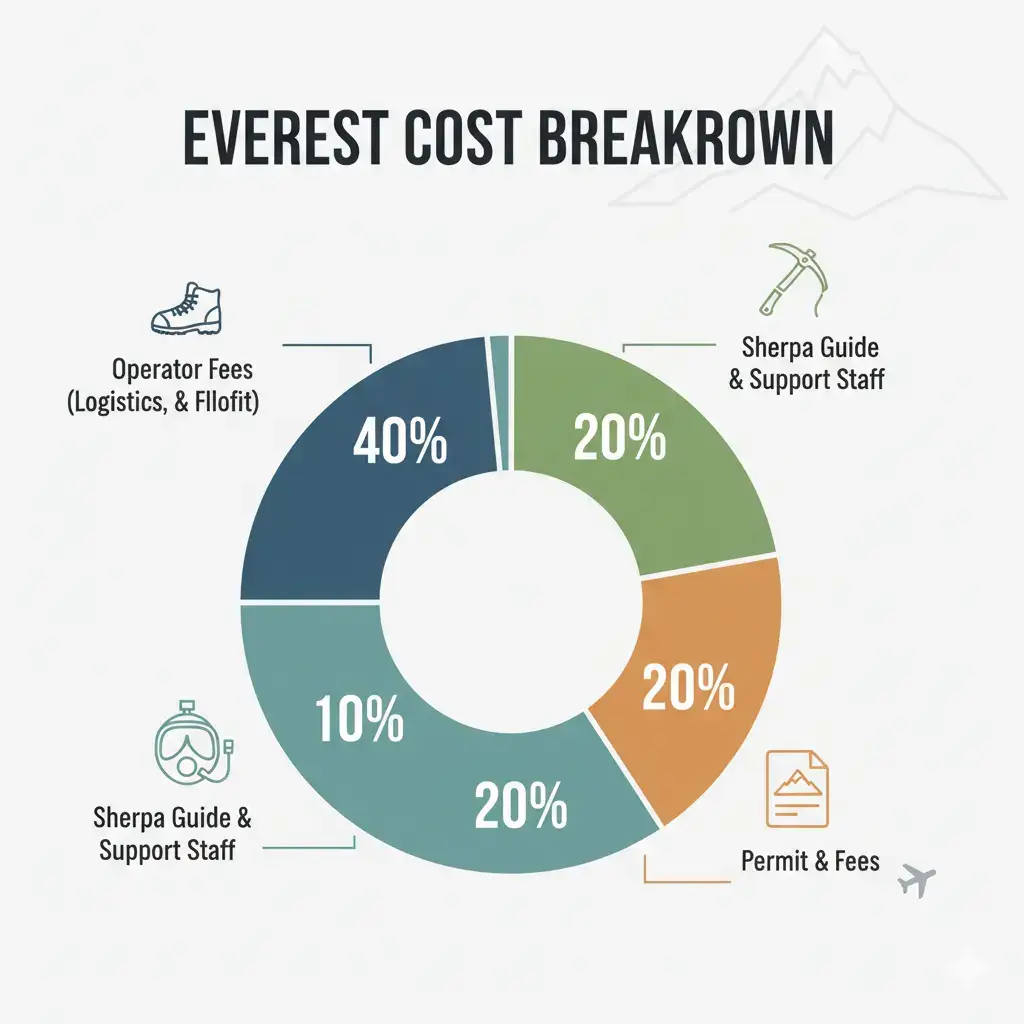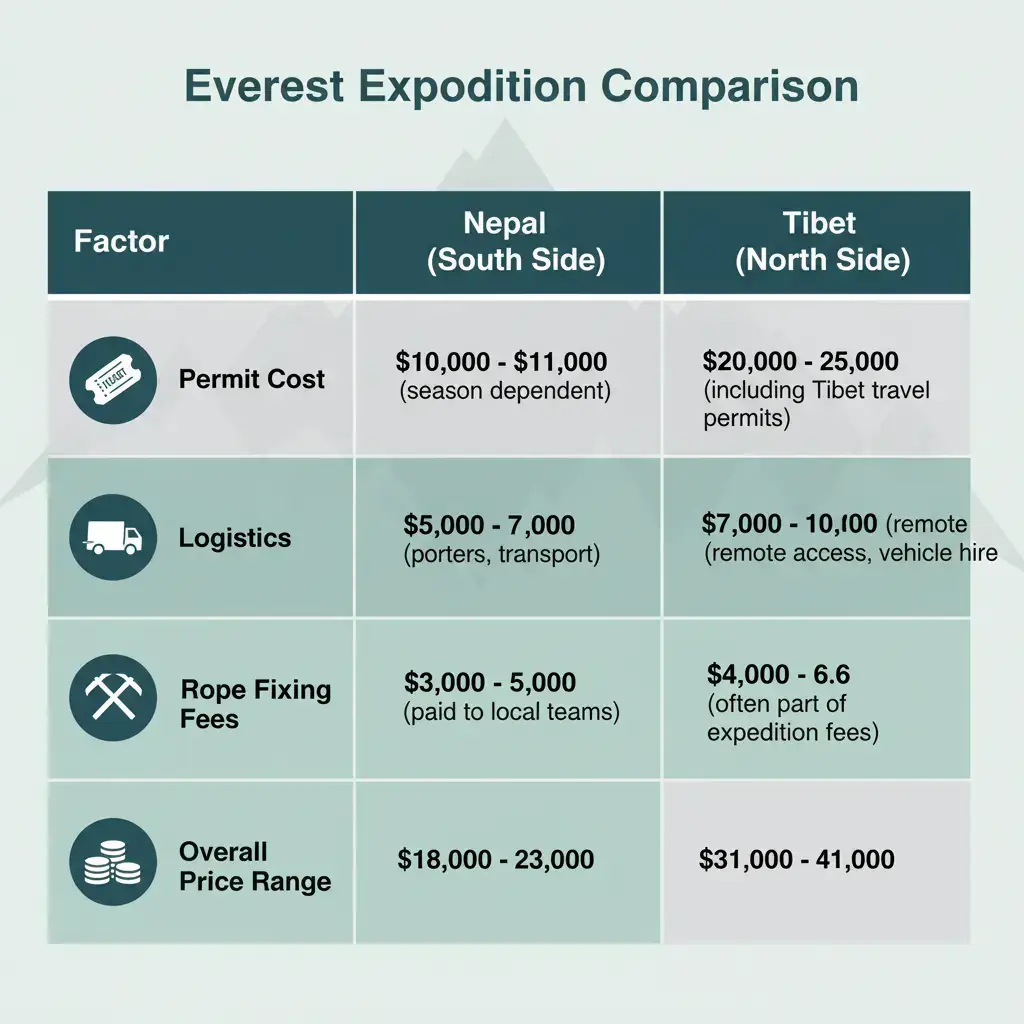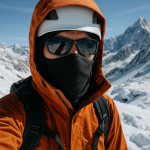Everest Costs: How Much Does It Really Cost to Climb Mount Everest?
One of the most common questions about the world’s highest peak is: how much does it cost to climb Mount Everest? The answer is complex, with a price tag that can range from as low as $30,000 to well over $120,000. This notable difference hinges on the expedition operator, the level of support, the chosen route, and various other factors.
Understanding the Everest cost is not just about the final number; it’s about knowing what you’re paying for. This guide meticulously details every financial component of an Everest expedition, covering everything from government permits and Sherpa fees to oxygen costs and unforeseen expenses that can surprise climbers.
Permit Costs: Your Ticket to the Mountain
Before you can even set foot on the mountain, you need a climbing permit issued by the respective government. This constitutes a substantial fixed expense within every expedition budget.
- Nepal (South Side): The Everest permit cost for foreigners on the popular south side is a flat fee of $11,000 USD per person during the main spring season. This fee is paid to the Government of Nepal.
- Tibet (North Side): The Everest climbing price Nepal vs Tibet differs here. The China-Tibet Mountaineering Association (CTMA) issues permits on a team basis, which often works out to around $8,000 to $9,000 USD per person, depending on team size.
- Garbage Deposit: On the Nepal side, teams must also pay a $4,000 garbage deposit. This fee is refundable if the team proves they have carried all their waste back down the mountain.
Operator & Package Prices
The largest portion of your Mount Everest expedition cost goes to the guiding company. Operators provide packages with varying service levels, typically categorized into three main groups.
Budget Expeditions: $30,000 – $45,000
Typically run by local Nepali companies, these packages offer the bare essentials. They cover permits, group food, tents, and basic Sherpa support. However, these may feature lower guide-to-client ratios, less experienced guides, and fewer amenities at base camp.
Mid-Range Expeditions: $50,000 – $75,000
This is the most common price point. These expeditions, often a mix of Western and Nepali leadership, provide a solid standard of service. This includes more experienced guides, a better client-to-Sherpa ratio (often 1:1), better food, more reliable oxygen systems, and stronger logistical support.
Premium Expeditions: $100,000 and up
High-end operators offer a luxury experience with top-tier safety standards. Clients can expect highly experienced Western guides, a 1:1 or even 2:1 Sherpa-to-client ratio, unlimited oxygen, a very comfortable base camp with individual tents and heated dining areas, and a professional meteorologist on staff.
Everest Cost Breakdown Per Person
So, where does all the money go? The total price is a sum of many individual costs that cover safety, logistics, and personnel. Here is a typical breakdown for a mid-range expedition.

- Sherpa Guide Fees: A high-altitude climbing Sherpa earns a base salary of $5,000 to $10,000 per season, plus a summit bonus. This is a critical investment in experience and safety.
- Oxygen Bottles: The Everest oxygen bottle cost is about $500-$600 each. With a climber needing 6-8 bottles, this totals $3,000-$4,800. The full system, including a mask and regulator, adds another $1,000-$2,000.
- Logistics & Infrastructure: This extensive category encompasses food for the entire 8-week trip, tents for all camps, rope-fixing fees ($600+ per person), cooking staff, and gear transportation.
- Flights & Transport: This covers international flights to Kathmandu and the thrilling domestic flight to Lukla ($400-$500 round trip), the gateway to the Khumbu.
- Personal Gear: Your own high-altitude equipment can cost $10,000 or more if purchased new.
- Insurance: Mandatory for all climbers, Everest-specific insurance with helicopter evacuation coverage costs $1,200 to $3,000. This constitutes a crucial element of your safety planning.
Hidden Costs & Extras
Beyond the advertised package price, several “hidden” costs require budgeting by every climber.
- Tips & Gratification: This constitutes a substantial portion of the team’s earnings. Budget $1,500 to $2,500 for your Sherpa guide, summit bonus, and the kitchen staff.
- Emergency Oxygen: If you use more oxygen than your allotted amount, you’ll be charged for extra bottles at a premium.
- Helicopter Evacuation: While insurance should cover it, you may need to pay upfront. A helicopter flight from Base Camp to Kathmandu can cost $5,000 or even more.
- Personal Expenses: This includes hotels and food in Kathmandu, visa fees, and any personal snacks or luxuries.
Nepal vs. Tibet: A Cost Comparison
The choice of route impacts the final price. While the Tibet permit is cheaper, the overall costs are often comparable due to different logistical challenges.

Generally, the Tibet side requires more vehicle transport and has stricter regulations, which can increase logistical costs for operators, offsetting the lower permit fee. The Nepal side has a more developed infrastructure of teahouses and porter support, but the rope-fixing fees through the Khumbu Icefall are a significant expense.
Cost Trends Over Time
The cost of climbing Everest has risen dramatically. In the early 1990s, when commercial guiding began, a spot on an expedition could be secured for under $20,000. As seen in the history of Everest commercialization, increased demand, higher safety standards, and inflation have pushed the average price to more than double that today.
Key Takeaways
- The answer to “How much does it cost to climb Mount Everest?” is a wide range, from $30,000 to over $120,000, with a mid-range average of $50,000-$75,000.
- The main cost drivers are the operator’s service level, the climbing permit ($11,000 in Nepal), Sherpa guide fees ($5k-$10k), and oxygen ($3k-$5k).
- Do not overlook hidden costs like tips, insurance, and emergency funds, which can add thousands to your budget.
- Everest remains one of the most expensive mountaineering expeditions in the world. Thorough financial planning is as critical as physical training.
Frequently Asked Questions (FAQ)
How much does it cost to climb Everest in 2025?
The cost to climb Mount Everest in 2025 typically ranges from $30,000 for a basic, local-led expedition to over $120,000 for a premium, Western-guided service. A common mid-range price is between $50,000 and $70,000 per person. This price includes permits, guides, oxygen, and base camp logistics.
What is the cheapest Everest expedition?
The cheapest Everest expeditions are typically offered by Nepali-run companies and can cost between $30,000 and $40,000. These ‘budget’ packages provide essential services like permits, group gear, and basic guide support, but may offer less Sherpa support, fewer amenities, and lower guide-to-client ratios compared to more expensive options.
How much does oxygen cost on Everest?
A single bottle of supplemental oxygen for Everest costs between $500 and $600. Climbers typically use 6 to 8 bottles for their ascent, bringing the total oxygen cost to around $3,000 to $4,800 per person. The complete oxygen system price, including the regulator and mask, can add another $1,000 or more.
How much does a Sherpa earn on Everest?
A high-altitude Sherpa guide on Everest can earn between $5,000 and $10,000 for a two-month expedition season, plus a summit bonus that can be $1,000 to $2,000. This is a significant income in Nepal but comes with extreme risk. The salary does not include tips, which are also a substantial part of their earnings.

Daniel Whitaker is a mountain journalist and lifelong climber with over 15 years of experience in the European Alps and the Andes. Although he has not yet attempted Mount Everest, he has summited several 6,000-meter peaks in South America and multiple classic alpine routes in the Mont Blanc massif. Daniel specializes in writing about the culture, history, and psychology of mountaineering. His work combines first-hand mountaineering experience with extensive research on Himalayan expeditions, making him an engaging guide to Everest’s enduring myths, records, and inspirational quotes.
